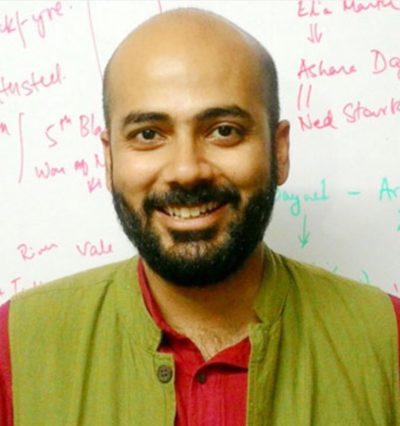Ravikant Kisana
 On 28th January 2020, standup comedian Kunal Kamra walked up to BJP-ally & news anchor Arnab Goswami on the Mumbai-Lucknow Indigo flight and heckled him for a minute on camera. For many a sufferer of Goswami’s bombastic bullying on prime time, this was a moment of apt retribution and karmic justice. For a few others this was an unacceptable breach of civic conduct expected on a flight.
On 28th January 2020, standup comedian Kunal Kamra walked up to BJP-ally & news anchor Arnab Goswami on the Mumbai-Lucknow Indigo flight and heckled him for a minute on camera. For many a sufferer of Goswami’s bombastic bullying on prime time, this was a moment of apt retribution and karmic justice. For a few others this was an unacceptable breach of civic conduct expected on a flight.
As the debate raged on whether his action was justified or not, I was a little taken aback by the declared motivation behind it. In his video, Kamra is seen as declaring that “this is for Rohith Vemula’s mother” referring to how Goswami had questioned Radhika Aai’s caste in aid of the larger conspiracy to dodge institutional blame for her son’s death under the SC and ST (Prevention of Atrocities) Act. He later tweeted the video himself saying, “I did this for my hero.. I did this for Rohit”. In a later tweet, he posted a screenshot of a message allegedly sent to Goswami’s personal number where he claims to be a “follower of Buddha & Mahavira”.
Now I am not sure about what Kamra is like in his personal life but up until this point, there has been little in his public body of work to suggest that he has a deeper understanding of caste persecution and Bahujan politics. As of the date of writing this piece, of the 16 released episodes of his political talk-show series on YouTube titled ‘Shut Up Ya Kunal’, there is not a single one which focuses on caste as a central talking point.
Only episode 5, featuring Jignesh Mevani alongside Shehla Rashid, is described as “A fun chat on independent politics, caste, our Prime Minister & ofcourse exposing the Lap dog Cow Swami with Shehla Rashid (ex Vice President, JNU) & Jignesh Mevani (MLA Vadgam, Gujarat).”
This is the only mention of the word ‘caste’ in all the episode titles and descriptions of his show, where he regularly (and almost exclusively) invites savarna politicians, civil society activists and media personnel. The show itself seems to focus primarily on journalism ethics and hinges on a typical privileged Congress-BJP binary understanding of politics, with occasional appearances by Kejriwal, Owaisi, etc as other relevant politicians.
Even in the episode featuring Jignesh, who speaks about Bhima Koregaon, manual scavenging, toxic social values of Brahminism and Una, Kamra is seen as simply listening before moving on to the next talking point. The conversation, punctuated by Shehla’s bits, is a very superficial one and doesn’t really delve into any structural commentary on Bahujan consciousness.
Looking at his comedy material on Twitter and Instagram, one can see that the staple of Kamra’s material has been taking potshots at Modi’s media allies. His stand-up shows also usually steer clear of caste discourse. The only show of his that I ever attended, performed last year in Pune, featured no caste commentary and came off as a very privileged, upper caste take on politics with bravado posturing against BJP (while quickly also emphasizing in the same breath that Congress is equally bad).
It is then strange to hear Kamra, most likely a Savarna Khatri, with no public record of associating with Ambedkar Students’ Association (ASA), the very organization that Rohith was working for, to suddenly declare him as his hero. With no public engagement with the ideas, politics and thoughts of Mahatma Phule, Dr. Ambedkar and Periyar, with no fraternizing with other associated Bahujan student mobilizations such as BAPSA, and with barely any attempt at amplifying voices of Bahujan scholars and activists— Kamra’s new declaration needs to be scrutinized.
In reality, there has been a larger mainstream Savarna move towards appropriating the suicide of Rohith as a student martyr and icon to be pitched against the forces of Hindutva. Rohith, the dead Dalit student, who dreamed of the stars is a great image for Savarna liberals to hold up. Whereas, Rohith, when he was alive was most likely marginalized and sidelined. After all, it is no secret that Rohith started his political career as a firebrand leader with the SFI. But as Jaswanth Jessie has written in Hindustan Times, as well as covered in Patwardhan’s documentary ‘Vivek’, Rohith left SFI owing to the casteist behavior of his comrades. Even today, despite acknowledging that caste is central to the fight against fascism, it is not uncommon for the Left cadre and liberal intellectuals to dismiss ASA, BAPSA or any other Bahujan mobilization as the “RSS B-team”.
The liberal logic is that the only force that can defeat fascism is the Left, and any mobilization which doesn’t align with the Left is acting against its own interest and actually splitting the unity of the resistance. This isn’t a new charge. Dalit and Bahujan samaj have always been gaslighted in similar manners. After all, even Dr. Ambedkar was asked to not “raise the untouchable issue” till the British are thrown out as it would break the unity of the anti-colonial movement.
This is a fascinating nuance for students of cultural imperialism to study, because the same liberal intellectuals who will passionately denounce RSS as ‘Brahminical Fascism’ will be blind to the Brahminical tendencies of their own intellectual habits, i.e., the desire to be in leadership position, to claim knowledge superiority and always dismiss/gaslight any structural challenge as coming from a space of unsound theoretical understanding. In truth, most Ambedkarites I know are not against Marx. They are against Indian Marxists. More specifically the Savarna leadership of the Indian Marxist movement. Even more specifically against how this section can simultaneously, in the same breath, claim to defend Bahujan rights and then immediately infantilize and dismiss Bahujan thought as lumpen or reactionary.
However, as fascism transforms the Indian state, the resistance that has emerged organically and despite all manners of misleading analyses, stands undeniably as a Feminist, Muslim and Bahujan challenge to the Sangh. Today, the image of Dr. Ambedkar far outnumbers those of Gandhi throughout the sites of resistance across the country. This has been a stunning reversal from the era of the 1960s-70s, when images of Dr. Ambedkar had practically disappeared from the public discourse and Gandhi made an appearance as wall-art in almost every Bollywood film of the era. Today, what we are seeing is a dramatic redrawing of the lines in the contest for the Indian nation, where the toxic Brahminical-fascism of Hindutva is being resisted by the women, the Muslims and the Bahujan.
In this context, bringing in certain semiotic and cosmetic vocabulary to the liberal discourse (which has always been a Savarna mainstay) becomes very important, else it rings hollow and devoid of any resonating context. The challenge then becomes about how to talk about Bahujan issues without ceding intellectual ground.
The constitutionalism of Dr. Ambedkar becomes an important accessory for the Liberal, who will strangely forget (or go out of their way to outright deny/dilute) the radicalism of his proposals for the annihilation of caste and about Buddha’s dhamma. Similarly, for the liberals, Rohith, the student martyr becomes a ‘hero’ even as dozens of Dalit and Bahujan student leaders with compelling personal stories of overcoming tremendous adversity to simply gain an education, are sidelined. I wonder if Kamra has heard of, or even met Jitendra Suna.
The ‘utility’ of Rohith’s name for Liberals seems to lie in the fact that the primary antagonists in his story were the ABVP, the BJP-appointed Vice-Chancellor Dattareya and the subsequent criminal conspiracy by the HRD Ministry to shrug off the blame for his institutional murder. Hence, the Liberal discourse will only talk about his tragic death and his suicide note, and strangely never about his political ideas.
Before I get dismissed and accused of whatabouttery and RSS-apologism by liberals and left intellectuals, I want to underline that my point is about cultural appropriation. Talking from a cross-sectional lens, in the context of resisting patriarchy and sexism, men have to make space for and listen to women instead of trying to lead them. Similarly, in the fight against racism and white supremacists, white liberals have to make space and listen to Black people, instead of trying to lead them. Then in a fight against Brahminical fascism, how is it that Savarnas do not make space for Bahujan voices and leadership? Is that too epistemologically reductive? I am sure there can be a postmodern justification of that somewhere which will claim so. And of course such justifications will get legitimized because Gramsci grins from his grave at the cultural hegemons claiming victimhood.
Either way, it becomes an important question to ask, who does the Bahujan icons belong to? How they are used in public discourse bears discussion. These are important questions for the Bahujan as well as for well-meaning Savarna liberals who are trying to position themselves as ‘good allies’.
Disclaimer: This piece, under NO circumstances, should be seen as an attempt to undermine the legacy of Rohith or Aai Radhika Vemula. This aims to introduce a critical commentary over possible cultural appropriation of their sacrifices.
Neither should this commentary be seen as a ‘soft-support’ for the virulently toxic Hindutva movement just because it questions the ‘Liberals’. There is a tendency amongst Liberals and Left scholars to dismiss every criticism aimed at them as coming from the mind of a ‘closet-sanghi’. That is a convenient, self-serving analysis which ensures that the only critique they consider valid is one which comes from sources they have previously validated. That reeks of intellectual cliquedom, and dare one say, Brahminical flexing.
~~~
Ravikant Kisana is a media sociologist and is currently an assistant professor at Flame University.










